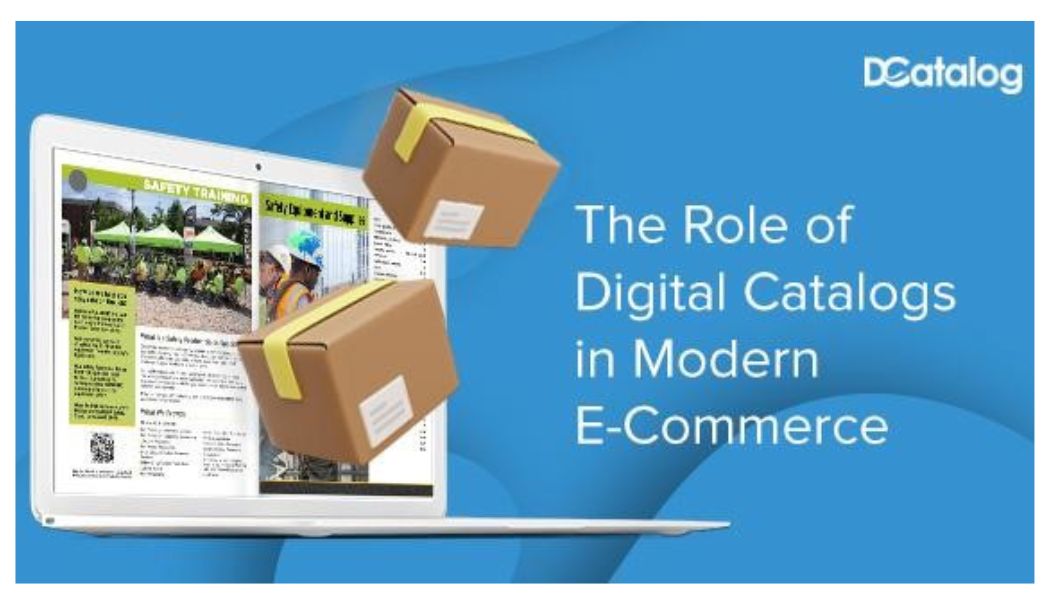The Role of Digital Catalogs in Modern E-Commerce
In the fast-paced realm of modern e-commerce, the traditional concept of a product catalog has evolved dramatically. The emergence of digital catalogs has redefined the way businesses showcase and sell their products online. This transformation is not merely a shift in format; it represents a fundamental change in how consumers interact with products and make purchase decisions. When putting together a digital catalog, make it appealing to the shopper so he or she can envision the products within his or her lifestyle.
In this article, we delve into the pivotal role of digital catalogs in modern e-commerce, examining the process of how to create a digital catalog, how to design for your audience, and how to maximize transaction and sales.
Transforming the Shopping Experience with Catalog Software
Static catalogs serve a purpose. However, in this increasingly digital age of social media reels,
It is essential to consider how to transform the shopping experience into one that is dynamic and immersive.
The key to creating outstanding digital catalogs is to use the best catalog software. You want to make sure you choose one that will be user friendly, intuitive, and empowering. It should enable your business to enhance the browsing experience. Through intuitive navigation, interactive elements, and a seamless integration services of multimedia, your digital catalog will elevate the user experience. Captivate and inform online shoppers when you create visually engaging, multimedia-rich presentations.
Best of all, unlike print catalogs, your buyers can access this content on desktops, tablets, or mobile devices.
Creating a Digital Catalog: From Concept to Customer Engagement
The process of creating a digital catalog involves several key steps, each geared toward optimizing the presentation of products and maximizing customer engagement. There are many aspects you want to keep in mind when sitting down to conceptualize and design your digital catalog.
-
Plan and organize the layout: Start with planning and organizing the layout of your digital catalog content. Try to have a strategic design. For example, you want to place the most important products on the outside of the page. Customers can flip through a digital catalog the same as they would a printed catalog, and their eyes will be naturally drawn to the items on the edge of the page as it flips.
-
Use high-quality visuals: Don’t scrimp on those product photos! Be sure to utilize professional images and make the product the centerpiece of each image. Remember that customers need to envision themselves living with or using your items on a daily basis.
-
Customize the catalog for your brand: Customization and branding of digital catalogs is a key step to help the content reflect the brand’s identity. Incorporate your brand logos and colors within the catalog viewer to maintain a consistent look and feel throughout.
-
Create an interactive experience: Integrate multimedia elements into your digital catalogs to give your consumers an immersive experience. Add clickable links, pop-up images, slideshow carousels, enable zoom functionalities on the page, and insert video and audio clips to showcase products, services, and the brand itself.
-
Optimize the user experience: While presenting your products in a visually appealing way throughout the catalog is important, you should also focus on creating a user-friendly experience. Incorporate elements such as easy navigation, a table of contents and sections that categorize products, and lay out both images, interactive elements, and information in a logical way that encourages your audience to explore the catalog.
-
Implement analytics: Once your digital catalog is out in the world, make sure to track how users interact with the content by utilizing analytics. Measure the effectiveness of the digital catalog and get an insight into your customers’ user behavior. Track data in real time such as page views, the links most clicked on, and the most popular products to refine your marketing efforts.
Publish Digital Catalogs and Easily Distribute
Once the digital catalog is meticulously crafted, the next crucial step is publication. Publishing a digital catalog involves making it accessible to the target audience. Unlike traditional print catalogs, you can distribute digital catalogs through various channels, platforms, and devices.
One important thing to keep in mind is to ensure your digital catalog is optimized for mobile devices. The right catalog software will help you to automatically optimize your digital catalog for different screen sizes, ensuring a seamless experience for users on smartphones and tablets.
When you distribute a catalog through multi-channel distribution, you are able to reach a wider audience across multiple channels. Embed your catalog on your business website, share the link through social media, or add the link within email marketing campaigns.
If you are still printing some traditional pieces, such as brochures, flyer maker, or postcards, you can bridge the gap between print and digital pieces by using a QR code. Generate a QR code that, when scanned, links the user directly to the digital catalog. This enables offline engagement, such as scanning the code in a physical store to access detailed product information, creating a seamless online-to-offline experience.
Enhance the Customer Experience and Drive Sales
The adoption of digital catalogs in modern e-commerce has a profound impact on both customer experience and overall sales performance. Digital catalogs enhance the customer experience by bringing products to life in ways that traditional catalogs cannot.
Online catalogs provide companies the ability to offer real-time information and product updates to consumers. Being able to automate the buying process creates an effective sales and marketing tool. Digital catalogs help to drive sales because they are accessible, convenient and engaging.
The interactive features embedded in digital catalogs encourage users to engage with the content actively. Shoppers can zoom in on product details, watch videos, and explore related items seamlessly, creating a dynamic and enjoyable browsing journey. Clickable links, pop-up descriptions, and multimedia elements capture attention and keep users exploring the catalog for longer periods. This increased engagement often translates into a deeper connection with the brand and its products
Integrating digital catalogs into the e-commerce ecosystem creates a seamless shopping journey. Customers can transition from browsing the catalog to making a purchase with just a few clicks. This frictionless experience contributes to higher conversion rates and customer satisfaction.
Future Trends and Innovations in Digital Catalogs
Digital catalogs transcend geographical boundaries, enabling businesses to showcase their products to a global audience. The accessibility of digital catalogs on various devices ensures that potential customers can explore products anytime, anywhere, contributing to an expanded reach and potential customer base. As technology continues to evolve, so do digital catalogs.
Emerging trends and innovations in this space include:
a. Augmented Reality (AR) Integration:
Some catalog software solutions are exploring the integration of augmented reality, allowing users to virtually place products in their physical environment before making a purchase decision.
b. Virtual Reality (VR) Experiences:
VR technology is being considered for creating immersive virtual shopping experiences. Users may be able to explore a digital catalog in a virtual environment, enhancing the feeling of being in a physical store.
c. Personalization Algorithms:
Advanced personalization algorithms are being incorporated into digital catalogs to provide tailored recommendations based on user preferences, purchase history, and browsing behavior.
d. Artificial Intelligence (AI) Enhancements:
AI is playing a role in optimizing digital catalogs by analyzing customer data, predicting trends, and automating certain aspects of catalog creation and management.
Conclusion: The Ongoing Evolution of E-Commerce Through Digital Catalogs
The role of digital catalogs in modern e-commerce is transformative. From the inception of catalog software to the creation and publication of engaging digital catalogs, businesses are leveraging this technology to enhance the customer experience, increase engagement, and drive sales.
Digital catalogs equipped with analytics tools provide businesses with real-time data on user behavior. This data-driven approach allows businesses to make informed decisions, refine their catalog strategy, and tailor their offerings based on customer preferences.
Compared to traditional print catalogs, digital catalogs offer a more cost-efficient and sustainable solution. Businesses can save on printing and distribution costs while reducing their environmental impact. The ability to update digital catalogs in real-time also eliminates the need for costly reprinting when product offerings change.
As businesses continue to embrace digital catalogs, the ability to adapt to emerging technologies and consumer expectations will be crucial. The future holds exciting possibilities, from augmented reality experiences to AI-driven personalization, ensuring that digital catalogs remain at the forefront of innovation in the ever-evolving landscape of modern e-commerce. Popular catalog software solutions offer a suite of tools to streamline the creation process.
For businesses looking to thrive in this digital era, the journey begins with embracing the power of digital catalogs to create memorable, immersive, and seamless shopping experiences for their customers.




